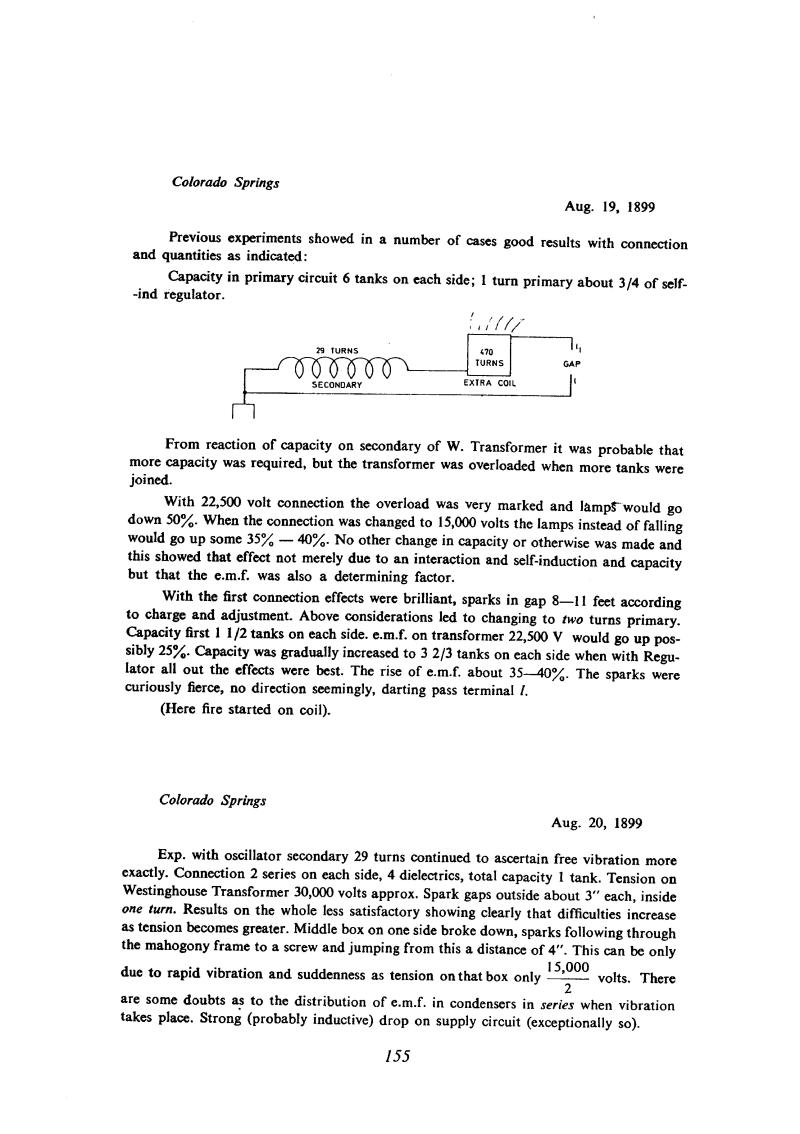
Nikola Tesla Books
Colorado Springs
Aug. 19, 1899
Previous experiments showed in a number of cases good results with connection and quantities as indicated:
Capacity in primary circuit 6 tanks on each side; 1 turn primary about 3/4 of selfind regulator.
From reaction of capacity on secondary of W. Transformer it was probable that more capacity was required, but the transformer was overloaded when more tanks were joined.
With 22,500 volt connection the overload was very marked and lamps would go down 50%. When the connection was changed to 15,000 volts the lamps instead of falling would go up some 35% - 40%. No other change in capacity or otherwise was made and this showed that effect not merely due to an interaction and self-induction and capacity but that the e.m.f. was also a determining factor.
With the first connection effects were brilliant, sparks in gap 8 - 11 feet according to charge and adjustment. Above considerations led to changing to two turns primary. Capacity first 1 1/2 tanks on each side, e.m.f. on transformer 22,500 V would go up possibly 25%. Capacity was gradually increased to 3 2/3 tanks on each side when with Regulator all out the effects were best. The rise of e.m.f. about 35 - 40%. The sparks were curiously fierce, no direction seemingly, darting pass terminal l.
(Here fire started on coil).
Colorado Springs
Aug. 20, 1899
Exp. with oscillator secondary 29 turns continued to ascertain free vibration more exactly. Connection 2 series on each side, 4 dielectrics, total capacity 1 tank. Tension on Westinghouse Transformer 30,000 volts approx. Spark gaps outside about 3" each, inside one turn. Results on the whole less satisfactory showing clearly that difficulties increase as tension becomes greater. Middle box on one side broke down, sparks following through the mahogony frame to a screw and jumping from this a distance of 4". This can be only due to rapid vibration and suddenness as tension on that box only $! {15,000 \over 2} $! volts. There are some doubts as to the distribution of e.m.f. in condensers in series when vibration takes place. Strong (probably inductive) drop on supply circuit (exceptionally so).
155


